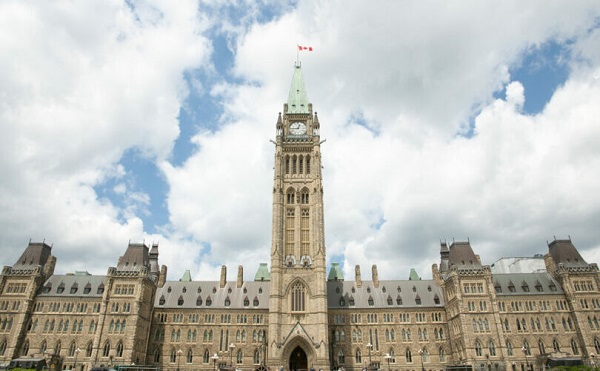Alberta
Alberta Budget 2024 – Health, Education, and Affordability announcements

Putting Albertans and Alberta families first
Budget 2024 is a responsible plan that puts Albertans and their families first by investing in strong health care, a modern education system and supports to keep life affordable.
Alberta’s government will ensure that the services and supports Alberta families rely on will be there for them. Budget 2024 continues to prioritize the delivery of high-quality, reliable health services across the province, with funding to continue planning the stand-alone Stollery Children’s Hospital, attract family physicians to rural areas and add more mental health and addiction facilities.
“With Budget 2024, we are ensuring that our province remains the best place to live and raise a family. We are investing in programs and services like new school builds, improved access to doctors and affordable housing to help Albertans stay healthy and build a successful future for themselves and their families.”
Budget 2024 highlights – Health care
- $475 million to modernize Alberta’s primary health care system, including:
- $200 million over two years to improve access to family physicians.
- $10 million for primary health care initiatives in Indigenous communities.
- $15 million to further develop a compensation model for nurse practitioners.
- $6.6 billion for physician compensation and development, up from $6.1 billion in Budget 2023.
- $1 billion over three years to transform the continuing care system to shift care to the community, enhance workforce capacity, increase choice and innovation, and improve the quality of care within the continuing care sector.
- $287 million over four years, part of a bilateral agreement with the federal government, for new mental health and addiction facilities, as well as for targeted supports for children and youth, adults and Indigenous communities.
- $62.4 million over three years to create two rural health professional training centres and expand physician education.
- $20 million over the next three years, including $17 million in new funding, to continue planning for a stand-alone Stollery Children’s Hospital.
- $35 million in capital funding over the next three years to purchase new emergency medical services vehicles and ambulances, upgrade the existing fleet and acquire additional equipment.
- $10 million over the next three years to create additional mental health professional spaces in post-secondary schools.
- $1.55-billion total expense to continue building the Alberta Recovery Model and ensure anyone suffering from the deadly disease of addiction or facing mental health challenges has an opportunity to pursue recovery.
“In Budget 2024, Alberta’s government is continuing to prioritize the delivery of high-quality, reliable health services across the province. This year’s record investment of $26.2 billion in health care will help us continue toward our goals of improving primary health care, adding capacity, reducing wait times, growing the workforce and advancing the Healthcare Action Plan.”
“Budget 2024 gives hope to those suffering from the deadly disease of addiction or facing mental health challenges. We are proud to invest in the Alberta Recovery Model and provide life-saving addiction treatment and care for those in need.”
Budget 2024 invests in a bright future for Alberta students with new and modernized schools, learning supports for students of all abilities and post-secondary programs to help build a skilled workforce.
Budget 2024 highlights – K-12 and post-secondary education
- $1.9 billion in capital funding over the next three years for planning, design or construction of new and modernized school projects across the province. This includes $681 million in new funding for 43 priority projects that will create 35,000 new or modernized student spaces.
- A total of 98 school projects are in various stages of the planning, design and construction process in 2024.
- $842 million in new operating funding over the next three years to further support enrolment growth, bringing additional enrolment-based funding to more than $1.2 billion over the next three years to enable schools to hire more than 3,100 education staff.
- More than $1.5-billion operating expense funding for educational learning supports for vulnerable students, children with specialized learning needs and other students requiring additional supports.
- $26 million over the next three years in additional funding for Program Unit Funding (PUF). PUF will total $209 million in the 2024-25 fiscal year.
- $103 million in capital funding over three years to increase modular classroom spaces to address the most urgent needs for additional student spaces across the province.
- $55 million in capital funding starting in 2025-26 for the University of Calgary’s multidisciplinary hub to add 1,000 spaces in science, technology, engineering and math (STEM) programs.
- $63 million in capital funding over the next three years for Olds College to renovate and expand student spaces in the WJ Elliot Building.
- $43 million in capital funding over the next three years for NAIT’s trades and technology learning facility.
- $13 million in capital funding over the next three years for Red Deer Polytechnic to create a new space to help businesses conduct applied research.
“The Alberta Advantage is back and booming, and people from across Canada and around the world are once again flocking to our incredible province. This of course puts added pressures on our schools, and our government is ready to help. Budget 2024 will support 43 new school projects to create and update 35,000 more student spaces. We’re providing $842 million in new funding to help our school boards hire more than 3,000 teachers and educational staff over the next three years. We will also boost funding to vulnerable students by increasing funding to the PUF program by $26 million.”
“Demand for skilled trades workers and graduates from STEM programs is projected to increase as our economy continues to grow and diversify. That’s why Alberta’s government is making targeted investments in post-secondary institutions to create more opportunities for students in high-demand fields of study.”
Although inflation is expected to ease this year, many families are still struggling with high grocery and utility costs. Budget 2024 helps keep life affordable and supports Albertans most affected by inflation.
Budget 2024 highlights – Affordability
- $717 million in capital grants to give Albertans and families access to more affordable housing, in line with Stronger Foundations – Alberta’s 10-year strategy designed to increase affordable housing supply and supports for Albertans.
- $355 million for the Alberta Child and Family Benefit to provide lower-income families with benefits, an increase of $31 million from last fiscal year.
- $980 million in savings for Albertans in 2024-25 because of indexation of personal income taxes.
- Budget 2024 formalizes the schedule to phase in a new personal income tax bracket on the first $60,000 of income, which would save individual taxpayers up to $760 per year once the tax cut is fully implemented.
- 25 per cent discount for seniors on personal registry services and medical driving tests, scheduled to come into effect in 2024-25.
- $38-million increase to operational funding for the Seniors Lodge, Social Housing and Specialized Housing and Rental Assistance programs in 2024-25.
- $22 million increased operating expense over the next three years to index foster, kinship and other caregiver rates, which will support stronger foundations for children in care and provide them with the care and protection they need for a brighter and secure future.
“With each strategic investment in affordable housing, reducing homelessness and supporting our seniors and people with disabilities, we are strengthening our communities and empowering vulnerable Albertans to thrive and succeed.”
“Our government is helping make life easier and more affordable for Alberta families. By helping foster caregivers increase stability for children and youth in care, and ensuring survivors of domestic and sexual violence have the resources they need to heal, we’re enabling connections that will lead to a brighter future for Alberta families.”
Budget 2024 is a responsible plan to strengthen health care and education, build safe and supportive communities, manage the province’s resources wisely and promote job creation to continue to build Alberta’s competitive advantage.
Alberta
The Canadian Energy Centre’s biggest stories of 2025

From the Canadian Energy Centre
Canada’s energy landscape changed significantly in 2025, with mounting U.S. economic pressures reinforcing the central role oil and gas can play in safeguarding the country’s independence.
Here are the Canadian Energy Centre’s top five most-viewed stories of the year.
5. Alberta’s massive oil and gas reserves keep growing – here’s why

The Northern Lights, aurora borealis, make an appearance over pumpjacks near Cremona, Alta., Thursday, Oct. 10, 2024. CP Images photo
Analysis commissioned this spring by the Alberta Energy Regulator increased the province’s natural gas reserves by more than 400 per cent, bumping Canada into the global top 10.
Even with record production, Alberta’s oil reserves – already fourth in the world – also increased by seven billion barrels.
According to McDaniel & Associates, which conducted the report, these reserves are likely to become increasingly important as global demand continues to rise and there is limited production growth from other sources, including the United States.
4. Canada’s pipeline builders ready to get to work
Canada could be on the cusp of a “golden age” for building major energy projects, said Kevin O’Donnell, executive director of the Mississauga, Ont.-based Pipe Line Contractors Association of Canada.
That eagerness is shared by the Edmonton-based Progressive Contractors Association of Canada (PCA), which launched a “Let’s Get Building” advocacy campaign urging all Canadian politicians to focus on getting major projects built.
“The sooner these nation-building projects get underway, the sooner Canadians reap the rewards through new trading partnerships, good jobs and a more stable economy,” said PCA chief executive Paul de Jong.
3. New Canadian oil and gas pipelines a $38 billion missed opportunity, says Montreal Economic Institute

Steel pipe in storage for the Trans Mountain Pipeline expansion in 2022. Photo courtesy Trans Mountain Corporation
In March, a report by the Montreal Economic Institute (MEI) underscored the economic opportunity of Canada building new pipeline export capacity.
MEI found that if the proposed Energy East and Gazoduq/GNL Quebec projects had been built, Canada would have been able to export $38 billion worth of oil and gas to non-U.S. destinations in 2024.
“We would be able to have more prosperity for Canada, more revenue for governments because they collect royalties that go to government programs,” said MEI senior policy analyst Gabriel Giguère.
“I believe everybody’s winning with these kinds of infrastructure projects.”
2. Keyera ‘Canadianizes’ natural gas liquids with $5.15 billion acquisition

Keyera Corp.’s natural gas liquids facilities in Fort Saskatchewan, Alta. Photo courtesy Keyera Corp.
In June, Keyera Corp. announced a $5.15 billion deal to acquire the majority of Plains American Pipelines LLP’s Canadian natural gas liquids (NGL) business, creating a cross-Canada NGL corridor that includes a storage hub in Sarnia, Ontario.
The acquisition will connect NGLs from the growing Montney and Duvernay plays in Alberta and B.C. to markets in central Canada and the eastern U.S. seaboard.
“Having a Canadian source for natural gas would be our preference,” said Sarnia mayor Mike Bradley.
“We see Keyera’s acquisition as strengthening our region as an energy hub.”
1. Explained: Why Canadian oil is so important to the United States

Enbridge’s Cheecham Terminal near Fort McMurray, Alberta is a key oil storage hub that moves light and heavy crude along the Enbridge network. Photo courtesy Enbridge
The United States has become the world’s largest oil producer, but its reliance on oil imports from Canada has never been higher.
Many refineries in the United States are specifically designed to process heavy oil, primarily in the U.S. Midwest and U.S. Gulf Coast.
According to the Alberta Petroleum Marketing Commission, the top five U.S. refineries running the most Alberta crude are:
- Marathon Petroleum, Robinson, Illinois (100% Alberta crude)
- Exxon Mobil, Joliet, Illinois (96% Alberta crude)
- CHS Inc., Laurel, Montana (95% Alberta crude)
- Phillips 66, Billings, Montana (92% Alberta crude)
- Citgo, Lemont, Illinois (78% Alberta crude)
Alberta
Alberta project would be “the biggest carbon capture and storage project in the world”

Pathways Alliance CEO Kendall Dilling is interviewed at the World Petroleum Congress in Calgary, Monday, Sept. 18, 2023.THE CANADIAN PRESS/Jeff McIntosh
From Resource Works
Carbon capture gives biggest bang for carbon tax buck CCS much cheaper than fuel switching: report
Canada’s climate change strategy is now joined at the hip to a pipeline. Two pipelines, actually — one for oil, one for carbon dioxide.
The MOU signed between Ottawa and Alberta two weeks ago ties a new oil pipeline to the Pathways Alliance, which includes what has been billed as the largest carbon capture proposal in the world.
One cannot proceed without the other. It’s quite possible neither will proceed.
The timing for multi-billion dollar carbon capture projects in general may be off, given the retreat we are now seeing from industry and government on decarbonization, especially in the U.S., our biggest energy customer and competitor.
But if the public, industry and our governments still think getting Canada’s GHG emissions down is a priority, decarbonizing Alberta oil, gas and heavy industry through CCS promises to be the most cost-effective technology approach.
New modelling by Clean Prosperity, a climate policy organization, finds large-scale carbon capture gets the biggest bang for the carbon tax buck.
Which makes sense. If oil and gas production in Alberta is Canada’s single largest emitter of CO2 and methane, it stands to reason that methane abatement and sequestering CO2 from oil and gas production is where the biggest gains are to be had.
A number of CCS projects are already in operation in Alberta, including Shell’s Quest project, which captures about 1 million tonnes of CO2 annually from the Scotford upgrader.
What is CO2 worth?
Clean Prosperity estimates industrial carbon pricing of $130 to $150 per tonne in Alberta and CCS could result in $90 billion in investment and 70 megatons (MT) annually of GHG abatement or sequestration. The lion’s share of that would come from CCS.
To put that in perspective, 70 MT is 10% of Canada’s total GHG emissions (694 MT).
The report cautions that these estimates are “hypothetical” and gives no timelines.
All of the main policy tools recommended by Clean Prosperity to achieve these GHG reductions are contained in the Ottawa-Alberta MOU.
One important policy in the MOU includes enhanced oil recovery (EOR), in which CO2 is injected into older conventional oil wells to increase output. While this increases oil production, it also sequesters large amounts of CO2.
Under Trudeau era policies, EOR was excluded from federal CCS tax credits. The MOU extends credits and other incentives to EOR, which improves the value proposition for carbon capture.
Under the MOU, Alberta agrees to raise its industrial carbon pricing from the current $95 per tonne to a minimum of $130 per tonne under its TIER system (Technology Innovation and Emission Reduction).
The biggest bang for the buck
Using a price of $130 to $150 per tonne, Clean Prosperity looked at two main pathways to GHG reductions: fuel switching in the power sector and CCS.
Fuel switching would involve replacing natural gas power generation with renewables, nuclear power, renewable natural gas or hydrogen.
“We calculated that fuel switching is more expensive,” Brendan Frank, director of policy and strategy for Clean Prosperity, told me.
Achieving the same GHG reductions through fuel switching would require industrial carbon prices of $300 to $1,000 per tonne, Frank said.
Clean Prosperity looked at five big sectoral emitters: oil and gas extraction, chemical manufacturing, pipeline transportation, petroleum refining, and cement manufacturing.
“We find that CCUS represents the largest opportunity for meaningful, cost-effective emissions reductions across five sectors,” the report states.

Fuel switching requires higher carbon prices than CCUS.
Measures like energy efficiency and methane abatement are included in Clean Prosperity’s calculations, but again CCS takes the biggest bite out of Alberta’s GHGs.
“Efficiency and (methane) abatement are a portion of it, but it’s a fairly small slice,” Frank said. “The overwhelming majority of it is in carbon capture.”

From left, Alberta Minister of Energy Marg McCuaig-Boyd, Shell Canada President Lorraine Mitchelmore, CEO of Royal Dutch Shell Ben van Beurden, Marathon Oil Executive Brian Maynard, Shell ER Manager, Stephen Velthuizen, and British High Commissioner to Canada Howard Drake open the valve to the Quest carbon capture and storage facility in Fort Saskatchewan Alta, on Friday November 6, 2015. Quest is designed to capture and safely store more than one million tonnes of CO2 each year an equivalent to the emissions from about 250,000 cars. THE CANADIAN PRESS/Jason Franson
Credit where credit is due
Setting an industrial carbon price is one thing. Putting it into effect through a workable carbon credit market is another.
“A high headline price is meaningless without higher credit prices,” the report states.
“TIER credit prices have declined steadily since 2023 and traded below $20 per tonne as of November 2025. With credit prices this low, the $95 per tonne headline price has a negligible effect on investment decisions and carbon markets will not drive CCUS deployment or fuel switching.”
Clean Prosperity recommends a kind of government-backstopped insurance mechanism guaranteeing carbon credit prices, which could otherwise be vulnerable to political and market vagaries.
Specifically, it recommends carbon contracts for difference (CCfD).
“A straight-forward way to think about it is insurance,” Frank explains.
Carbon credit prices are vulnerable to risks, including “stroke-of-pen risks,” in which governments change or cancel price schedules. There are also market risks.
CCfDs are contractual agreements between the private sector and government that guarantees a specific credit value over a specified time period.
“The private actor basically has insurance that the credits they’ll generate, as a result of making whatever low-carbon investment they’re after, will get a certain amount of revenue,” Frank said. “That certainty is enough to, in our view, unlock a lot of these projects.”
From the perspective of Canadian CCS equipment manufacturers like Vancouver’s Svante, there is one policy piece still missing from the MOU: eligibility for the Clean Technology Manufacturing (CTM) Investment tax credit.
“Carbon capture was left out of that,” said Svante co-founder Brett Henkel said.
Svante recently built a major manufacturing plant in Burnaby for its carbon capture filters and machines, with many of its prospective customers expected to be in the U.S.
The $20 billion Pathways project could be a huge boon for Canadian companies like Svante and Calgary’s Entropy. But there is fear Canadian CCS equipment manufacturers could be shut out of the project.
“If the oil sands companies put out for a bid all this equipment that’s needed, it is highly likely that a lot of that equipment is sourced outside of Canada, because the support for Canadian manufacturing is not there,” Henkel said.
Henkel hopes to see CCS manufacturing added to the eligibility for the CTM investment tax credit.
“To really build this eco-system in Canada and to support the Pathways Alliance project, we need that amendment to happen.”
Resource Works News
-

 International2 days ago
International2 days agoTrump confirms first American land strike against Venezuelan narco networks
-

 International24 hours ago
International24 hours agoMaduro says he’s “ready” to talk
-

 Business2 days ago
Business2 days agoHow convenient: Minnesota day care reports break-in, records gone
-

 Business2 days ago
Business2 days agoThe great policy challenge for governments in Canada in 2026
-

 Bruce Dowbiggin1 day ago
Bruce Dowbiggin1 day agoThe Rise Of The System Engineer: Has Canada Got A Prayer in 2026?
-

 Business2 hours ago
Business2 hours agoVacant Somali Daycares In Viral Videos Are Also Linked To $300 Million ‘Feeding Our Future’ Fraud
-

 International24 hours ago
International24 hours agoLOCKED AND LOADED: Trump threatens U.S. response if Iran slaughters protesters
-

 International2 hours ago
International2 hours agoTrump Says U.S. Strike Captured Nicolás Maduro and Wife Cilia Flores; Bondi Says Couple Possessed Machine Guns


